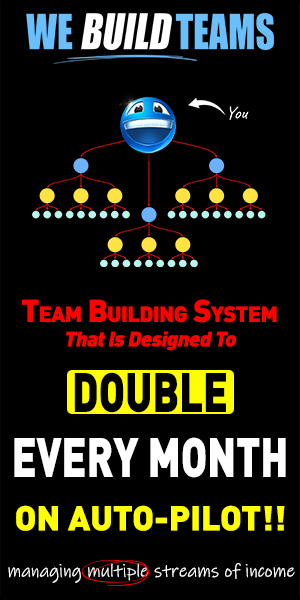Paid Advertising: A Strategic Approach to Generating Leads for Your Network Marketing Business
Introduction:
Paid advertising is a powerful tool for generating leads and driving growth in your network marketing business. With the right strategy and execution, paid advertising can help you reach a wider audience, target specific demographics, and attract qualified leads. In this article, we will explore how you can leverage paid advertising to effectively generate leads for your network marketing business.
1. Set Clear Goals and Define Your Target Audience:
Before diving into paid advertising, it’s crucial to set clear goals and define your target audience. Identify the specific objectives you want to achieve, such as lead generation, increased website traffic, or brand awareness. By understanding your target audience’s demographics, interests, and pain points, you can create targeted ad campaigns that resonate with them and drive better results.
2. Choose the Right Advertising Platforms:
There are various paid advertising platforms available, each with its own strengths and target audience. Consider the following options:
a. Search Engine Advertising: Platforms like Google Ads allow you to display ads when users search for specific keywords related to your network marketing business. This method ensures your ads are shown to people actively searching for relevant information or solutions.
b. Social Media Advertising: Platforms like Facebook Ads, Instagram Ads, LinkedIn Ads, and Twitter Ads offer powerful targeting options to reach specific demographics, interests, and behaviors. These platforms allow you to create visually engaging ads and engage with your audience directly.
c. Display Advertising: Display ads appear on websites, blogs, and mobile apps across the internet. They can be in the form of banners, pop-ups, or native ads. Display advertising can help increase brand visibility and reach a wider audience.
3. Craft Compelling Ad Copy and Design:
The success of your paid advertising campaign relies heavily on the quality of your ad copy and design. Here are some tips:
a. Grab Attention with Strong Headlines: Craft compelling and attention-grabbing headlines that entice users to click on your ads. Clearly communicate the value proposition and benefits of your network marketing business.
b. Highlight Unique Selling Points: Differentiate your business by showcasing your unique selling points. What makes your products or services stand out? Emphasize the key benefits and advantages you offer to your target audience.
c. Use Persuasive Call-to-Actions (CTAs): Encourage users to take action by using persuasive CTAs in your ad copy. Clearly state what you want them to do, such as “Sign up now,” “Get a free consultation,” or “Shop now.”
d. Engaging Visuals: Use eye-catching visuals that align with your brand identity and resonate with your target audience. Images, videos, or graphics can significantly enhance the impact of your ads and capture users’ attention.
4. Implement Targeting and Retargeting Strategies:
To maximize the effectiveness of your paid advertising campaigns, utilize targeting and retargeting strategies:
a. Targeting: Take advantage of the targeting options available on advertising platforms. Narrow down your audience based on demographics, interests, behaviors, or location to ensure your ads are seen by those most likely to be interested in your network marketing business.
b. Retargeting: Implement retargeting campaigns to reach users who have previously interacted with your website or shown interest in your offerings. By showing tailored ads to these warm leads, you increase the chances of converting them into customers.
5. Monitor, Analyze, and Optimize:
Paid advertising requires continuous monitoring, analysis, and optimization to improve performance and generate quality leads:
a. Track Key Metrics: Monitor key metrics such as click-through rates (CTR), conversion rates, cost per lead (CPL), and return on ad spend (ROAS). These metrics provide insights into the effectiveness of your campaigns and help identify areas for improvement.
b
. A/B Testing: Conduct A/B tests by creating variations of your ad copy, visuals, or targeting parameters to determine which elements perform better. Continuously optimize your campaigns based on the results of these tests.
c. Landing Page Optimization: Ensure that your landing pages are optimized to convert visitors into leads. Align the messaging, design, and call-to-action on your landing pages with your ad campaigns to provide a seamless user experience.
Conclusion:
Paid advertising can be a valuable strategy for generating leads in your network marketing business. By setting clear goals, targeting the right audience, crafting compelling ad copy and design, implementing targeting and retargeting strategies, and continuously monitoring and optimizing your campaigns, you can effectively generate high-quality leads and drive the growth of your network marketing business. Remember to align your paid advertising efforts with your overall marketing strategy to ensure consistency and maximize results.
Like this:
Like Loading...

